- Case Studies
- Posted
New Build VS Old Build

A recent study undertaken by Dublin City Council could serve to shatter many commonly held misconceptions about how existing buildings can perform when compared to new build, even simply just in terms of running costs.
Over the following pages Donncha O’Dulaing, Heritage Officer with Dublin City Council, takes us through the surprising and often illuminating results of the study which compares five existing buildings from economic, environmental and cultural perspectives.
The retention, rehabilitation and reuse of older buildings can play a pivotal role in the sustainable development of Dublin City. The city contains many examples of buildings, which, though not protected, have artistic, architectural or historic merit. Many of the buildings are attractively designed, have stood the test of time and make a positive contribution to the local streetscapes of the city and to the quality of life of its citizens. In some cases they also serve to protect underlying deposits of archaeology. Equally importantly, the retention and reuse of older buildings can engineer benefits through the reduction in waste generation.
The Built to Last: The Sustainable Reuse of Buildings” study looks at five existing buildings from an economic, environmental and cultural perspective, and compares the results of reusing each building with those estimated on the basis of replacing it with a new building on the same site. The figures used for the economic analysis are based on real-life refurbishment costs.
The study's economic review examines the case-study buildings and compares the costs for demolition and new construction with the costs of retaining and re-using the buildings, while the environmental review analyses the environmental impact and lifetime cost of each of the five case-study buildings, detailing the differences and similarities between the existing buildings and their hypothetical replacements.
Finally, the cultural review establishes the aesthetic, amenity and heritage values of the existing buildings and compares these values with the replacement buildings.
Quite a number of issues outside the scope of this study were identified for further study, including a more comprehensive study using the methodology on a larger number of buildings, and a specific analysis of the sustainable reuse of buildings listed on the Record of Protected Structure. In addition, further useful studies could include an analysis of the market end value of reused buildings versus new buildings, and the effect of urban intensification on the environment; does the reduction in commuting and urban sprawl caused by intensification reduce eco points and have a positive effect on the environment? There is no attempt in this report to deal in detail with these important issues. It should be noted, however, that that the actions outlined will be implemented, where feasible, through the Dublin City Heritage Plan and other partnership initiatives.
The many organisations and interests which constitute the Irish construction industry should be made aware that re-using buildings is a viable alternative to demolition and new construction, with additional environmental and cultural benefits that translate to more profitable buildings in the long term.
In the five case studies used to prepare this report, hypothetical new build scenarios were compared with actual refurbishment projects in relation to building costs, environmental analysis and whole life costs. In general, the conclusions illustrate the advantages, both economic and environmental, of re-using and extending the lifespan of the building stock.
The studies show that constructing new buildings on brown-field sites is more expensive than retaining and re-using existing buildings except in situations where the extent of building repair and refurbishment required is extremely high. As the repair costs decrease, the re-use option becomes progressively more economic to a point where reduced costs of as much as 50% can be achieved. This study has shown that the re-use of buildings has greater value for the environment and cost savings over the future life of the buildings. Existing buildings can also have greater aesthetic and heritage values. The study findings support the acknowledged international view that the re-use of buildings can minimise the depletion of non-renewable resources and is therefore essential to sustainable development.
The results show that a refurbished existing building performs better in environmental terms than a hypothetical newly constructed building on the same site. In the buildings assessed for this report, the environmental impact per m2 is less in the refurbished building than in the hypothetical redeveloped building. Moreover, building practice in Ireland will in future need to respond to European legislation and policy on waste hierarchy, which will impact on costs and make the re-use of buildings more attractive.
In most cases, the cost of servicing and running buildings during their lifetime far exceeds the initial costs of construction. There should, therefore, be a genuine interest in procuring built assets with low running and maintenance costs. In four of the case studies the re-use option generated lower whole life costs, making this a better environmental option.
In four of the five buildings examined, the re-use option had lower capital costs. From a cultural perspective the existing buildings were considered to have added value and thus outperformed the replacement buildings. It is considered that refurbished buildings have a particular benefit to offer in commercial terms. Although figures to support this are not currently available for Dublin, a study on the rental returns of listed historic buildings in the United Kingdom has found that they have consistently outperformed unlisted structures for the last five years.
The capital cost study contained in the report concludes that only where intervention levels are extremely high does a new-build alternative cost less than a comparative conservation/reuse option. Thereafter, as intervention levels diminish, conservation becomes progressively cheaper to the point where significant reductions in cost can be achieved (up to 50%). In the case-study buildings, the conservation/reuse option had lower whole life costs, making it a better environmental option. From a cultural perspective, the reused buildings out-performed the hypothetical new buildings in all cases.
Before Image of Dublin City Archive
After Image of Dublin City Archive
Further Study
The assessment methodology used in the study should be developed through a more comprehensive study of both Protected and non-Protected Structures. This would involve a more extensive statistical analysis of capital cost comparisons between both conservation/reuse and new build, change of use issues, market rental return and sales value.
A pilot study of the assessment model in action should be carried out on a number of building projects nominated by selected Public Authorities. Further study is needed about the market end value of reused versus new buildings in Ireland, in order to address some important questions. Is the market value of a conserved building higher or lower than that of a new building at the same location? Is the market value of a historic building enhanced by conservation of its fabric? Is the cost of conservation higher or lower than the increase in market value of the conserved building? Does conservation act as a catalyst for increased market values in neighboring properties? Is a new building likely to appreciate at the same rate as a historic building over a ten year period? This research should include the examination of data and research carried out by English Heritage.
Spatial Location
The whole question of location has a huge bearing on the market value of a refurbished building. The question of location has not been addressed in the study. Any framework addressing this issue should explore how buildings in a poor location can be assisted, such as through a regeneration / framework development plan.
Density Gain
Potential density gain from a total rebuild is a normal part of developing options on a site. Again the conservation policies contained in the Framework Development Area Plan represent one effective way of counterbalancing the perception that total redevelopment will be acceptable.
Framework Development Plans
Consideration should be given to how these types of plans can provide an integrated and articulated supportive context without having to assess the refurbishment in an isolated policy context.
Buildings in a complex cluster
Consideration should be given to a case study involving a cluster of buildings where one or a number of buildings are being retained and the rest of the site is being redeveloped.
Education
A targeted conference on the sustainable reuse of buildings to key stakeholders such as Local Authorities, developers, private owners and so on is vital. Existing education and training courses in related subjects should be reviewed and a series of simple, practical leaflets on basic methods of conservation such as window repair, roof repair and weathering of buildings should be promoted.
The Department of the Environment, Heritage and Local Government leaflets (1996) should be revised and reissued and have regard to the environmental value as well as the cultural value of existing buildings. Special training and accreditation of the professions contractors and suppliers should be encouraged. Technical Guidance on the performance aspects of historic buildings should be prepared, demonstrating how Irish building typologies can be made to conform to building regulations in terms of safety, structure and accessibility. Education about recycling of building components and materials is required for all those involved in the construction industry. This should be coordinated by a group consisting of the DOEHLG, Sustainable Energy Ireland, and the professional and academic institutes.
Further Actions
Local Authority Development Plans should support the sustainable reuse of buildings. In making decisions on the demolition or reuse of buildings, local government and public authorities should adopt an integrated approach when making decisions about the viability of existing buildings. An integrated incentive-based approach should be applied to developing the historic environment, through tax incentives, grant aid, and development right trade-offs. Review and evaluation of initiatives taken in the area of sustainable reuse of buildings should be monitored.
Dublin City Council commissioned this study in association with the Heritage Council, in order to achieve one of the objectives of the Dublin City Heritage Plan (2202-2006), which is to promote environmental, economic and cultural sustainability. It is an attempt to focus the debate on the sustainable reuse of buildings by identifying the issues and suggesting further actions and study. Following public competition Carrig Conservation in partnership with McGrath Environmental Consultants, James P. McGrath & Associates and Murray O’Laoire Architects, were commissioned to undertake the study.
‘Built to Last’ also reflects the draft Dublin City Development Plan 2005-2011, which proposes Policy H25 as follows: “It is the policy of Dublin City Council to seek the retention, reuse and refurbishment of older buildings of architectural, cultural, historic and aesthetic merit which, though not protected structures, make a positive contribution to the character, appearance and quality of local streetscapes and the sustainable development of the city."
- retention
- Dublin
- heritage
- sustainable
- rehabilitation
- reuse
- development
- conservation
- georgian heritage
Related items
-
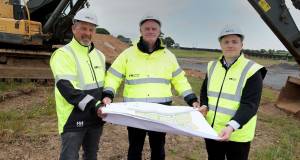 £30m passive scheme launched in Down
£30m passive scheme launched in Down -
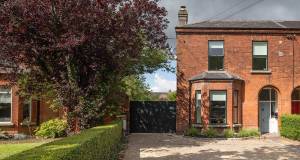 Thinking inside the box - Victorian semi retrofitted as a house within a house
Thinking inside the box - Victorian semi retrofitted as a house within a house -
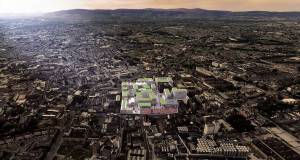 Ballymore to deliver mooted zero carbon Guinness Quarter
Ballymore to deliver mooted zero carbon Guinness Quarter -
 The Jodrell Bank grand challenge
The Jodrell Bank grand challenge -
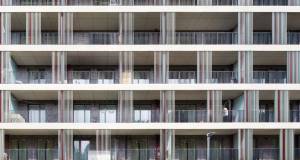 Phase one complete at UK’s largest passive scheme
Phase one complete at UK’s largest passive scheme -
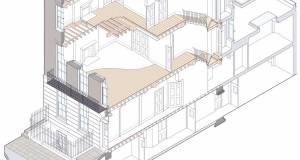 Historic London house gets near passive transformation
Historic London house gets near passive transformation -
 Dublin to host conference on rapid-build nZEB construction
Dublin to host conference on rapid-build nZEB construction -
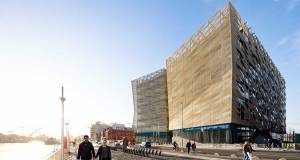 Ireland's new central bank hits nZEB & BREEAM outstanding eco rating
Ireland's new central bank hits nZEB & BREEAM outstanding eco rating -
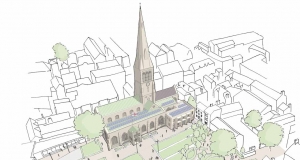 Leicester cathedral to get passive extension
Leicester cathedral to get passive extension -
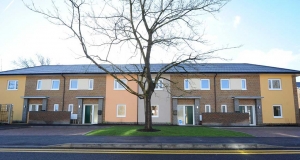 13 affordable passive homes completed in Crawley, West Sussex
13 affordable passive homes completed in Crawley, West Sussex -
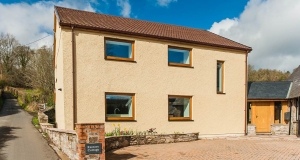 Brecon Beacons stone cottage gets Enerphit treatment
Brecon Beacons stone cottage gets Enerphit treatment -
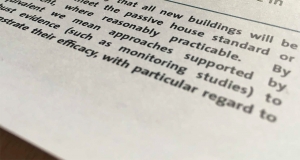 Passive house or equivalent - The meaning behind a ground-breaking policy
Passive house or equivalent - The meaning behind a ground-breaking policy

